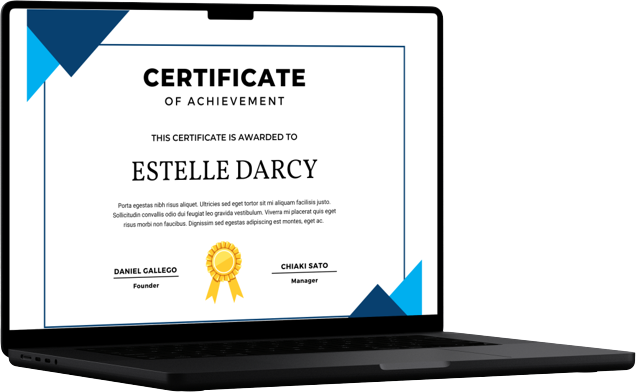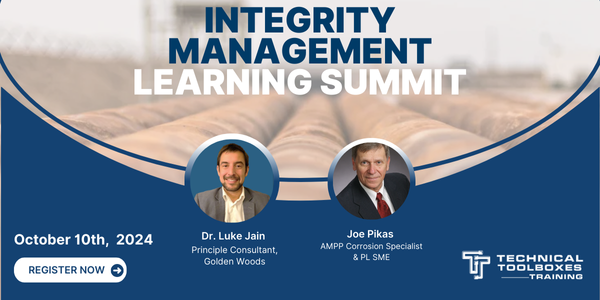June 28, 2023: Identifying Vintage and Modern Pipe
-
Author: Bill Amend
-
Level: Intermediate
-
Study time: 3 hours
Write your awesome label here.
Course overview
There is increased interest among pipeline operators in using randomly selected samples of pipe to determine the characteristics of an entire pipeline segment. An important consideration is determining whether all the pipe samples represent the same population of pipe or whether the observations indicate that multiple populations of pipe are present. When multiple pipe populations are present the mechanical properties and metallurgical characteristics can be different for each population. As a result, the vulnerabilities and threats to long-term integrity can be different, and sampling plans may need to be modified to obtain a statistically defensible number of measurements for each population.
Webinar participants will learn how to use visual and nondestructive inspection to identify: the manufacturing process used to make the pipe, the manufacturer of the pipe, whether the pipe was rehabilitated after prior service and reused in a new application, and the related integrity and much more.
Webinar participants will learn how to use visual and nondestructive inspection to identify: the manufacturing process used to make the pipe, the manufacturer of the pipe, whether the pipe was rehabilitated after prior service and reused in a new application, and the related integrity and much more.
PDH Certificate included upon successful completion

-
Course Outline
Participants will learn how to use visual and nondestructive inspection to identify:- seamless
- ERW
- lap seam
- butt weld (furnace butt weld and continuous butt weld)
- three variants of seams made by A.O. Smith (arc welded, arc+flash welded, and flash welded)
- single side and double side submerged arc welded seams (SSAW and DSAW)
-
- the manufacturer of the pipe
- whether the pipe was rehabilitated after prior service and reused in a new application, and the related integrity implications for that pipeline segment
- various types of girth weld designs used since the 1920s including:
- Bell + spigot joints
- Bell-bell-chill ring (BBCR) joints
- Open root butt joints
- Modified joints typical of rehabilitated pipe
- how or if the girth welds were originally tested or inspected
- evidence of welded repairs, included “puddle welding” and the related integrity threats associated with early repairs
- obsolete pipe bends (wrinkle bends and miter bends) and fittings and the integrity threats associated with them
-
-
Bill Amend
Professional Engineer, Metallurgical Engineering SME, RSI Pipeline Solutions
ABOUT Bill
Bill Amend has provided metallurgical engineering services to the energy industry (oil & gas production and pipelines and geothermal energy production) since 1979. He previously worked with DNV (12 years), Structural Integrity Associates (5 years), Southern California Gas Company (14 years), and Unocal Corporation (12 years).
Bill’s areas of expertise include failure analysis, integrity management of early vintage steel pipelines and pipeline welds, in-situ, nondestructive determination of pipe properties, development and review of welding procedures for in-service pipelines and pipeline repair, materials selection for hydrogen pipelines, materials testing and selection for severe geothermal environments, and technical training.
Mr. Amend has served in various leadership roles in subcommittees of API 1104 and has managed and conducted several research projects for PRCI, earning the Distinguished Service Award from PRCI in 2002. He is co-holder of three U.S. patents related to control of corrosion in geothermal systems. Mr. Amend is a Professional Engineer registered in the State of California. He earned a Bachelor of Science in Metallurgical Engineering from Cal Poly, San Luis Obispo.
Bill’s areas of expertise include failure analysis, integrity management of early vintage steel pipelines and pipeline welds, in-situ, nondestructive determination of pipe properties, development and review of welding procedures for in-service pipelines and pipeline repair, materials selection for hydrogen pipelines, materials testing and selection for severe geothermal environments, and technical training.
Mr. Amend has served in various leadership roles in subcommittees of API 1104 and has managed and conducted several research projects for PRCI, earning the Distinguished Service Award from PRCI in 2002. He is co-holder of three U.S. patents related to control of corrosion in geothermal systems. Mr. Amend is a Professional Engineer registered in the State of California. He earned a Bachelor of Science in Metallurgical Engineering from Cal Poly, San Luis Obispo.

